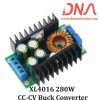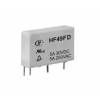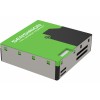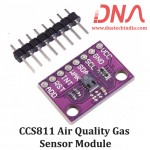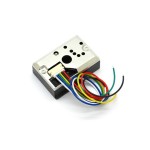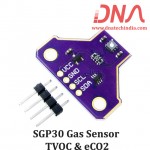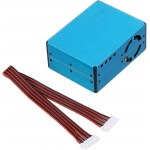Nova PM2.5 SDS011 Air Quality Sensor Module
-
Rs. 2,577.12 (inc GST)
Rs.2,184.00 + GSTQty :
GST Invoice: Available for all purchases — eligible for input tax credit.
Delivery: 2–8 days across India. No MOQ required.
Bulk Orders: Need more quantity or not in stock? Email: dnatechindia [at] gmail.com
Import Service: We import a wide range of electronic components on request.
Nova PM Sensor SDS011 PM2.5 Air Quality Detection Sensor
SDS011 PM2.5 Dust Sensor + Laser Detection + Accurate measurement range 0.0-999.9 ug/m3.
The Nova PM Sensor SDS011 PM2.5 Air Quality Detection Sensor utilizes laser scattering technology to accurately measure particle concentration between 0.3 to 10um. With a quick response time of less than 10 seconds, this sensor ensures reliable air quality monitoring. It features a UART output for easy integration and a built-in fan for stable performance. The SDS011 is ideal for applications like air purifiers, air exchangers, and filtering systems, making it a versatile choice for both residential and commercial use in India.
Designed for high precision, the Nova PM Sensor SDS011 operates under a wide temperature range of -20 to 50℃. Its digital output allows for seamless communication with other devices. This sensor's high resolution of less than 0.3ug/m3 provides valuable insights into air quality standards, ensuring a healthier environment.
For anyone seeking reliable air quality solutions, the Nova PM Sensor SDS011 is a smart choice. Its efficiency, ease of use, and accurate measurements cater to the growing demand for air quality monitoring in India. Explore the benefits of this advanced sensor technology today.
Explore the innovative range of GAS and Air Quality Sensors at DNA. Discover the Nova PM Sensor SDS011 and enhance your air quality monitoring solutions. Check other GAS and Air Quality Sensor that we have in stock.
If you're looking for specific electronic components in India, reach out to us. We can import items not in stock and support both retail and bulk orders. Check out our related products like Nextion Displays, Digital ICs, Capacitors, Development Modules, IGBTs, and Sensors. Contact Us.
Features of Nova PM Sensor SDS011 PM2.5 Air Quality Detection Sensor
- High precision laser detection
- Quick response time under 10 seconds
- Easy integration with UART output
- Built-in fan for stability
- Wide operating temperature range -20 to 50℃.
Specification of Nova PM Sensor SDS011 PM2.5 Air Quality Detection Sensor
- Measuring output: PM2.5, PM10
- Range: 0.0-999.9 ug/m3
- Power supply voltage: 5V
- Maximum working current: 100mA
- Sleep current: 2mA
- Response time: 1s.
Applications of Nova PM Sensor SDS011 PM2.5 Air Quality Detection Sensor
- PM2.5 Detector
- Air Purifier
- Air Exchangers
- Filtering System.
Related Links for Nova PM Sensor SDS011 PM2.5 Air Quality Detection Sensor
Package Includes
- 1 X Nova PM Sensor SDS011 PM2.5 Air Quality Detection Sensor
NEW Products
Product Page : New Products
K7812-2000R3 Mornsun DC - DC Converter
SMA Dust Cover Yellow for RF Connector SMA Dust Cover Yellow protects SMA RF connectors from dust an..
Rs.303.21 (inc GST)
Rs.256.96 + GST
SKU: 9400 | DAI363
Stock: 25
INA333 Instrumentation Amplifier Module
INA333 Precision Instrumentation Amplifier ModuleINA333 Breakout Module for easy implementation + lo..
Rs.649.00 (inc GST)
Rs.550.00 + GST
SKU: 1616 | DAB059
Stock: 20
AI-Thinker VC-02 Kit
AI-Thinker VC-02 KitAI-Thinker VC-02 voice recognition KitThe VC-02-Kit is a development board desig..
Rs.672.60 (inc GST)
Rs.570.00 + GST
SKU: 8711 | DAF002
Stock: 35
Onspot 100 Watt Portable Mini Inverter with Inbuilt Battery
Onspot 100 Watt Portable Mini InverterPortable 100W Mini Inverter with inbuilt battery (156Wh) &..
Rs.6,937.22 (inc GST)
Rs.5,879.00 + GST
SKU: 10488 | DAJ629
Stock: 2
Have You Seen
Product Page : Have You Seen
USB to RS485 Industrial Converter Module Adapter Board
USB to RS485 Industrial Converter Module Adapter BoardUSB to RS485 Converter for long-range communic..
Rs.162.84 (inc GST)
Rs.138.00 + GST
SKU: 3621 | DAF122
Stock: 30
XL4016 280W/300W CC-CV Buck Converter
XL4016 280W/300W CC-CV Buck ConverterXL4016 Buck Converter for efficient step-down voltage conversio..
Rs.293.82 (inc GST)
Rs.249.00 + GST
SKU: 1602 | DAB372
Stock: 40
Hongfa HF49FD/012-1H11T 12 Volt Relay
Hongfa HF49FD/012-1H11T 12 Volt Relay for Low-Power Control Hongfa HF49FD/012-1H11T Relay, SPST conf..
Rs.92.04 (inc GST)
Rs.78.00 + GST
SKU: 8623 | DAH892
Stock: 100
Sensirion SPS30 Particulate Matter Sensor for Air Quality
Sensirion SPS30 Particulate Matter Sensor for Air QualitySPS30 PM2.5 Sensor, Range: 0–1000 µg/m³, pr..
Rs.3,774.82 (inc GST)
Rs.3,199.00 + GST
SKU: 10398 | DAJ506
Stock: 5
Related Products
CCS811 Air Quality Gas Sensor Module
CCS811 Air Quality Gas Sensor ModuleCCS811 Air Quality Sensor ModuleThe CCS811 Air Quality Breakout ..
Rs.1,932.84 (inc GST)
Rs.1,638.00 + GST
SKU: 1361 | DAA932
Stock: 9
GP2Y1010AU0F Optical Dust Sensor
GP2Y1010AU0F Optical Dust SensorGP2Y1010AU0F Module is used to Sense Dust Particles in air and also ..
Rs.486.75 (inc GST)
Rs.412.50 + GST
SKU: 1511 | DAE082
Stock: 0
Expansion board for Nextion enhanced display
Nextion Enhanced Expansion Board for HMI Displays Expansion board for Nextion Enhanced Display with..
Rs.710.36 (inc GST)
Rs.602.00 + GST
SKU: 2136 | DAB514
Stock: 0
SGP30 Gas Sensor TVOC & eCO2
Indoor Air Measurement SGP30 Gas SensorSGP30 Indoor air Quality measurement gas sensor module for TV..
Rs.1,585.92 (inc GST)
Rs.1,344.00 + GST
SKU: 2332 | DAB923
Stock: 4
PMS5003 PM2.5 AIR QUALITY SENSOR BY PLANTOWER
PMS5003 PM2.5 Air Quality SensorPMS5003 sensor measures PM2.5, PM1.0, PM10 using laser scattering te..
Rs.1,711.00 (inc GST) Rs.1,758.20
Rs.1,450.00 + GST

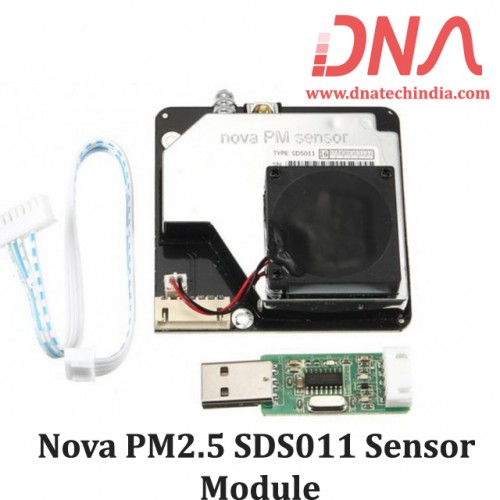

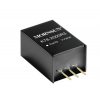
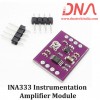
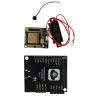
-100x100.png)

